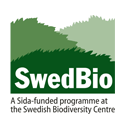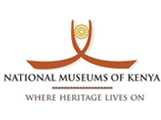Click on images to enlarge
Solanum incanum in flower (Photo: John Mauremootoo, CC-BY-NC)
Solanum incanum in flower (Photo: John Mauremootoo, CC-BY-NC)
Solanum incanum immature fruit (Photo: John Mauremootoo, CC-BY-NC)
Solanum incanum mature fruit (Photo: Nepenthes, CC-BY-SA)
Solanum incanum young plant (Photo: John Mauremootoo, CC-BY-NC)
Solanum incanum regeneration after control by burning, Arusha NP, Tanzania (Photo: John Mauremootoo, CC-BY-NC)
Solanum incanum regeneration after control by burning, Arusha NP, Tanzania (Photo: John Mauremootoo, CC-BY-NC)
Scientific name
Solanum incanumL.
Synonyms
Solanum bojeri Dunal; Solanum campylacanthum Hochst.; Solanum delagoense Dunal; Solanum lichtensteinii Willd.; Solanum panduriforme E. Mey.
Common names
Sodom apple, bitter apple poison apple snake apple thorn apple, mutongu (Kikuyu), mtunguja mwitu (Kiswahili), ochok (Luo).
Family
Solanaceae
Origin
It is thought to originate in Africa. It is also found from the Middle East to India.
Naturalised distribution (global)
Locations within which Solanum incanum is naturalised include Australia, Madagascar, Mauritius and eastern Africa.
Introduced, naturalised or invasive in East Africa
Although likely to be native to the three countries Solanum incanum is invasive in parts of Kenya, Uganda (A.B.R. Witt pers. obs.) and Tanzania (Henderson 2002).
Habitat
Mostly as a weed of disturbed and overgrazed areas and road sides, but also found in various types of woodland, and along the margins of riverine and evergreen forest (Fukuhara and Kubo 1991).
Description
Solanum incanum is a herb or soft wooded shrub up to 1.8 m in height with spines on the stem, stalks and calyces and with velvet hairs on the leaves. The leaves are alternate, egg-shaped in outline with broad end at base (ovate) with slightly wavy margins (especially on young leaves), with a grey-green upper surface and a green-white lower surface.
The flowers are often borne in the leaf axils, sometimes solitary or in clusters of a few flowers. The yellow or white calyx is fused, the purple corolla regular, bell- or wheel shaped with 5 stamens. The globular fruits are yellow at the beginning, becoming black later on.
Reproduction and dispersal
Spread from seed in dumped garden waste, and by birds and other animals.
Economic and other uses
This plant has medicinal properties. The leaves and stems are useful as green materials in compost.
Environmental and other impacts
Solanum incanum is toxic to livestock and considered to be a major threat to grazing. It is also found in savanna grasslands where it might impact upon native herbivores. It is one of the most abundant weeds in East Africa where it displaces native vegetation. It has become invasive in some protected areas to the detriment of native vegetation and wild animal grazing.
S. incanum can be termed a "bush encroacher", a native species that has become invasive. Such plants are likely to exist in a stable balance under natural conditions. However, under human-induced changes such as overgrazing, such species can increase in density to the detriment of other vegetation.
Management
The precise management measures adopted for any plant invasion will depend upon factors such as the terrain, the cost and availability of labour, the severity of the infestation and the presence of other invasive species.
The best form of invasive species management is prevention. If prevention is no longer possible, it is best to treat the weed infestations when they are small to prevent them from establishing (early detection and rapid response). Controlling the weed before it seeds will reduce future problems. Control is generally best applied to the least infested areas before dense infestations are tackled. Consistent follow-up work is required for sustainable management.
The editors could not find any specific information on the management of this species. However, practical experience relates that it can be controlled by intensive and repetitive weeding and it is likely that herbicides would be effective applied as foliar, basal bark (painting herbicide onto the bark) or cut stump applications. When using any herbicide always read the label first and follow all instructions and safety requirements. If in doubt consult an expert.
Legislation
Not listed as a noxious weed by the state or governments in Kenya, Tanzania and Uganda.
References
Fukuhara, K. and Kubo, I. (1991). Isolation of steroidal glycoalkaloids from Solanum incanum by two countercurrent chromatographic methods. Phytochemistry 30(2): 685-687.
Henderson, L. (2002). Problem plants in Ngorongoro Conservation Area. Final Report to the NCAA.
Editors
Agnes Lusweti, National Museums of Kenya; Emily Wabuyele, National Museums of Kenya, Paul Ssegawa, Makerere University; John Mauremootoo, BioNET-INTERNATIONAL Secretariat - UK.
Acknowledgments
This fact sheet is adapted from The Environmental Weeds of Australia by Sheldon Navie and Steve Adkins, Centre for Biological Information Technology, University of Queensland. We recognise the support from the National Museums of Kenya, Tropical Pesticides Research Institute (TPRI) - Tanzania and Makerere University, Uganda. This activity was undertaken as part of the BioNET-EAFRINET UVIMA Project (Taxonomy for Development in East Africa).
Contact
BioNET-EAFRINET Regional Coordinator: [email protected]












